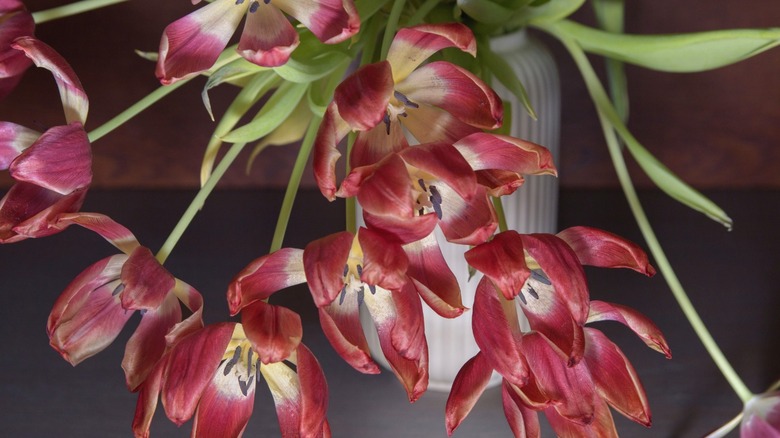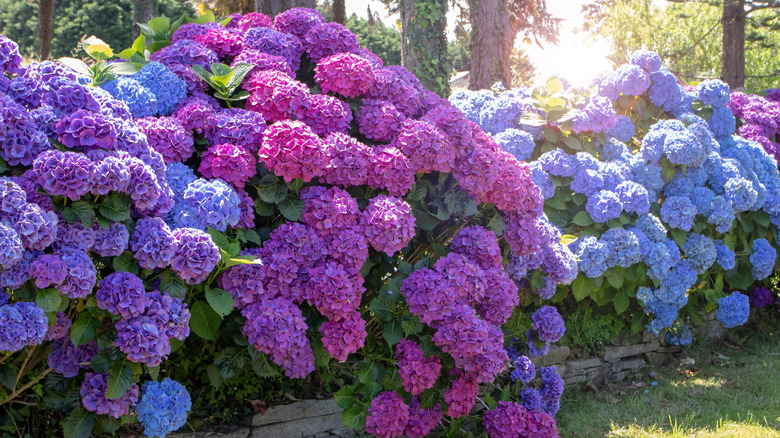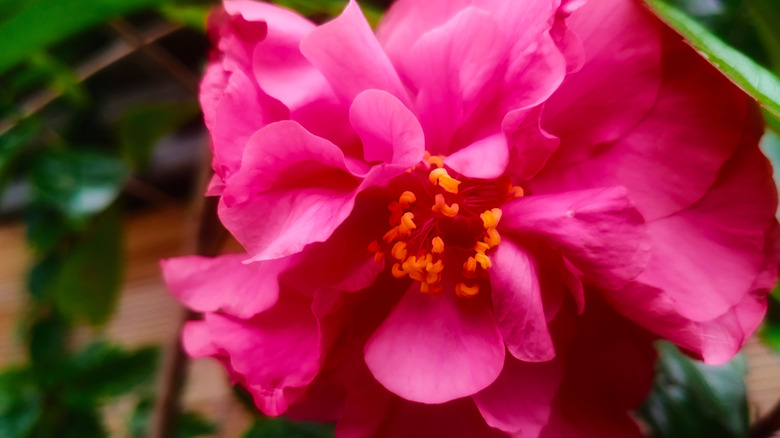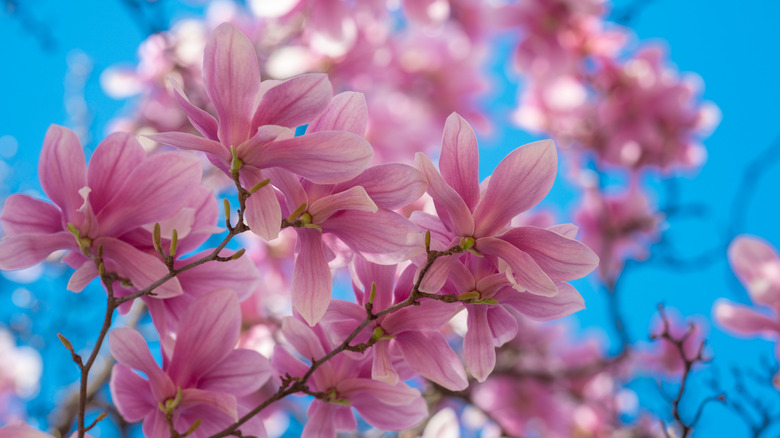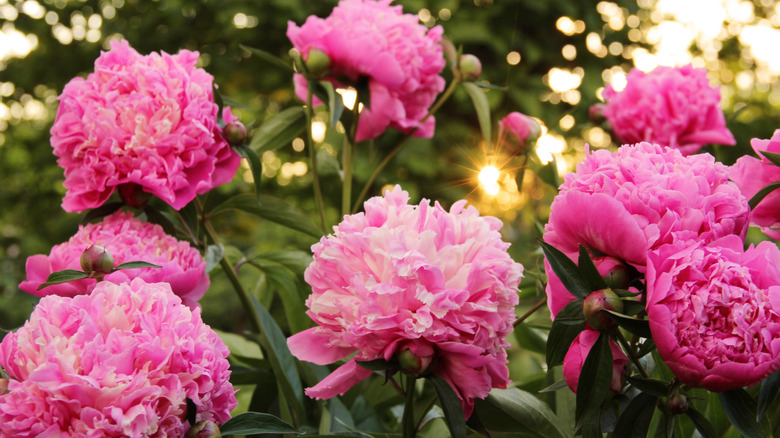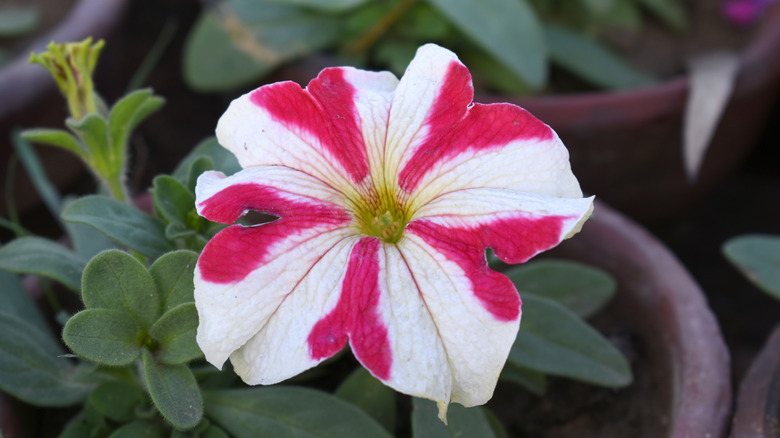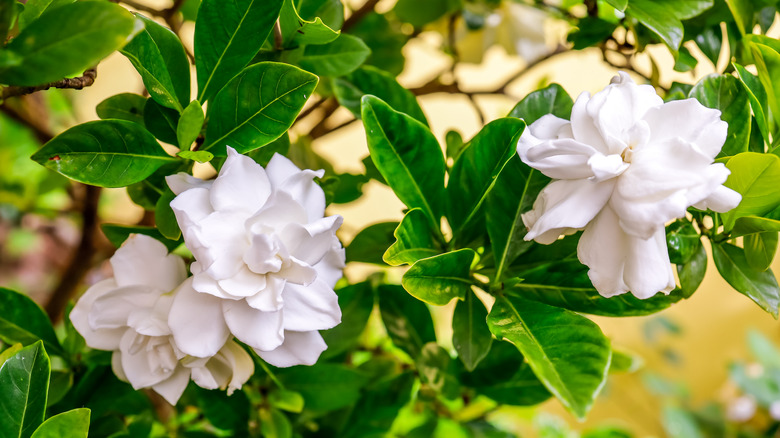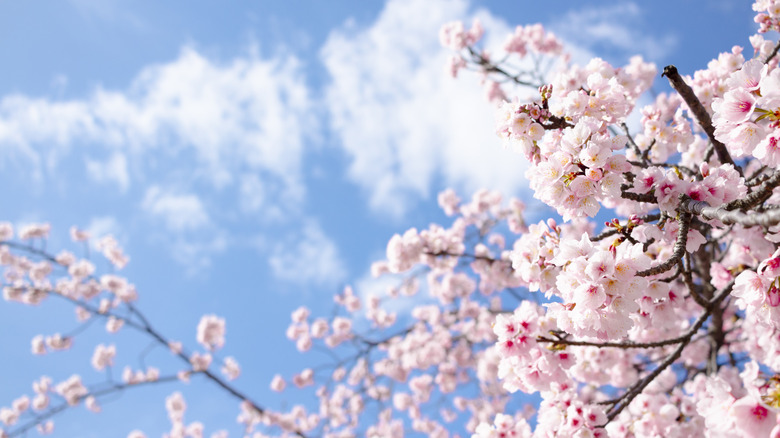12 Popular Flowers That Might Not Be Worth Growing For A Cut Garden
If you are planting a garden, one of the most important things to ask yourself is the purpose — are you hoping to grow things you can eat, decorate with, or perhaps some flowers and other plants for a pollinator garden? Second to that is the question of cutting your flowers or enjoying their beauty from afar. Unfortunately, not all flowers fare well once cut. While certain picks can last for weeks with proper care, some florals will wilt almost instantly, even with special love and attention. While how long your flowers will last once cut plays a big role, there are also some other factors to consider. Do they have a pleasant smell that you want in your home? Will they bring in unwanted pests? Could they play succubus to other flowers in the vase? Are they fast-growing flowers, or will you have to wait weeks for just a couple blooms? The list goes on.
If you adore some of these flowers, however, and don't mind the limitations that accompany them, then don't feel like you are banned from planting them in your garden. Ultimately, your garden should be filled with flowers that bring you joy, and some of these are fantastic additions that will bring your flower beds to life. This is just a helpful guide to make sure you are properly informed before you begin planting.
Hydrangeas
Hydrangeas can last a good while on the bush, but once you cut them they are not quite as perky. Though you can keep them looking good for up to two weeks, this is by no means low maintenance and will require frequent changing of water, removal of leaves, and specific cutting techniques. They also change color based on the pH of your soil — which you may not know until they have already begun to bloom. If you're still set on growing them, prepare yourself by reading up on common hydrangea issues.
Poppies
These stunning flowers are a favorite of artists, but a bane to florists. Tempting as they are with their gorgeous colors and bent necks, they go limp in two to four days, so their beauty is short-lived. Even if a gardener uses some of the best tricks for growing poppies, the blooms can also be stubborn and refuse to open fully, which prevents you from viewing the entirety of the flower before it begins to fade. Since the petals are so delicate, they are susceptible to damage from weather and do best when protected from the elements.
Hibiscus
Another delicate yet vibrant flower, hibiscus is even shorter-lived. They may last a singular day once picked, closing completely by the end of the day, never to open again. Most types of hibiscus flowers will also only last a day when left alone, but green thumbs could get up to a week out of a hardy hibiscus hybrid. The blooms last significantly longer when left attached, however, and the large blossoms and bright colors allow you to enjoy them even if you are viewing from far away.
Magnolias
Magnolia flowers can last a handful of days, but once again, they require a good amount of attention if you want them to stick around. Not only will you have to refresh the water frequently, but you also have to keep them away from direct sunlight, pick blooms that are not fully mature, cut the stems at an angle, and use plant food just to eke out a slightly longer life. You are better served leaving these on their uniquely structural branches if you care about longevity.
Peonies
The issue with peonies is not necessarily their lifespan, but rather the passengers it brings with it. Peonies and ants have a symbiotic relationship — they provide the ants with delicious nectar, and the ants in turn protect them from other predators. Once a peony has fully bloomed, ants will generally depart, but be careful bringing in flowers that are not yet fully mature, as you may be welcoming some unwanted guests. If you'd rather avoid this altogether, consider planting alternative flowers that look like peonies.
Daylilies
Lilies and daylilies can look very similar at first glance, but don't be fooled by their likeness in appearance. Daylilies do not have the hearty nature that lilies are known for, and instead of lasting for at least a week, their blooms deflate after a single day. If you aren't sure which is in your garden, daylilies have multiple stems and layered petals while lilies have a single stem and non-layered petals. Gardeners who decide not to cut these flowers can grow them next to a good daylily companion plant like hibiscus, which is also best left in the ground.
Tulips
One of the most beloved spring flowers, tulips are best enjoyed when left in the ground. While you certainly can cut them, they tend only to last a couple days (five to 10) before getting droopy and dropping petals. A common combination is tulips and daffodils, but this particular pairing could also contribute to your tulips declining suddenly as they contain a sap that shortens the vase life of other flowers, especially susceptible tulips. Similar to peonies, there are several flowers that look like tulips that may be better for cut arrangements.
Daffodils
Did you know that these springtime staples might be sabotaging your arrangements? As previously mentioned, when in water, daffodils release sap that is not only toxic to other flowers but can also clog their stems, preventing them from slurping up any water or nutrients. You can help to prevent this effect by soaking the daffodils in their own water for three hours before adding to another vase, but be aware that each time you cut them they will release more sap — and even on their own, you will only get five to seven good days out of them. If you still want to include them in your garden, this guide shares everything you need to know before planting daffodils.
Petunias
These large, trumpet-like, heat-tolerant plants are a favorite of many gardeners as they are low to the ground and add a bright pop of color — as well as coming in just about every color imaginable, including striped! But because of their heavy heads and sticky leaves, the stems can't support their own weight for long. So if you do cut them, make sure they are in a short vase that supports the head. They also will only last four to six days once cut, so they will be pretty short-lived.
Gardenias
This flower is not just a no-go for its short life span (about three days) before it will start to wilt and brown but also because of its scent. Though some people find gardenia to be a pleasant smell (it is the base note of many popular designer perfumes), it is also one of the strongest, so it has the potential to be overpowering, especially if you have a large bunch. That said, you may be able to balance the scent with these gardenia companion plants.
Ranunculus
These flowers have stunning, closely layered petals, and make a great statement addition to an arrangement, but if you are looking for longevity these aren't the choice for you. Though they do dry beautifully, when left to the vase they will last only three to seven days on average. Since they will bloom for four to six weeks, they can be enjoyed for much longer if you leave them in the ground. Just make sure to plant your ranunculus bulbs in the best month for quality blossoms.
Cherry blossoms
These flowering trees are the center of many a celebration around the world, but their beauty is paired with a short life. These trees will only flower for about a week to 10 days, with the peak being only five to six days long (sometimes shorter). Though you may be able to keep these flowers in a vase for up to two weeks with proper care, they aren't worth picking. If you really want to experience this springtime delight, invest in a cherry tree that you can keep safe from your — and your neighbors' — nippers. You'll also want to ensure the best growing conditions for your cherry blossom tree.
